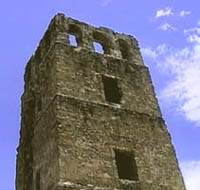|
Panama City, capital of the Central American nation bearing the same name, was founded two times and each time its construction began from scratch. In 1515, Captain Antonio Tello de Guzmán found a town of fishermen named Panama while coasting the shores of the previously unknown South Seas (Pacific Ocean). Four years later, on August 15, 1519, Governor Pedro Arias de Avila, better known as Pedrarias Davila, founded the capital city of Castilla del Oro there.
The first Spanish city on the Pacific coast was thus born, exuding the style of the period, and in honor of Queen Joan of Castile and her son, King Charles, it was called Nuestra Señora de la Asuncion de Panama. The expeditions of Almagro and Pizarro that ended in the conquest of the Inca Empire in Peru in 1532 began there. Also, from its very founding it became the necessary travel route for the most important commercial enterprises in the American continent. The idea of building a canal to unite both oceans was still a long way away. Yet Panama quickly profited from the route that connected it to the port of Nombre de Dios, located on the Atlantic coast.
A large portion of the gold found in the Americas, along with riches from Baja California and Inca treasures, followed that route to the metropolis. Soon the city became the political, religious, and economic center of the region. The Cabildo was then built, along with the Casas Reales (government offices). The convents, churches and hospital were laid out and organized in an urban way, with streets parallel to each other forming an exact grid around the Plaza Mayor. The main buildings looked out to the coast and single-arched bridges linked the neighborhoods of Malambo and Pierdevidas where a diverse population made up of natives, blacks, and Spanish made their living. Of special interest is the cathedral, a symbol of the city with its three-bodied belfry. It stands in the same place as the main altar, a unique characteristic in Latin America.
This prosperous city suffered several fires, pirate attacks, and even an earthquake. Each time it was rebuilt until the pirate Henry Morgan completely destroyed it on January 28, 1671. The Spanish, indigenous, and African survivors, in search of a brighter future and armed with the spirit of their cultures, joined forces and founded the new city of Panama in 1673, only ten kilometers away from the old one. In Panama La Vieja (Old Panama), we currently find the ruins of seven convents, a hospital, a fort, two bridges, a cathedral with its arrogant tower and a few other remains that remind us of a work ethic that has been with us for more than 500 years. Panama La Vieja , an example of the best of the latin spirit. |
|
|
 Could
a city capital have been founded twice?
Could
a city capital have been founded twice?